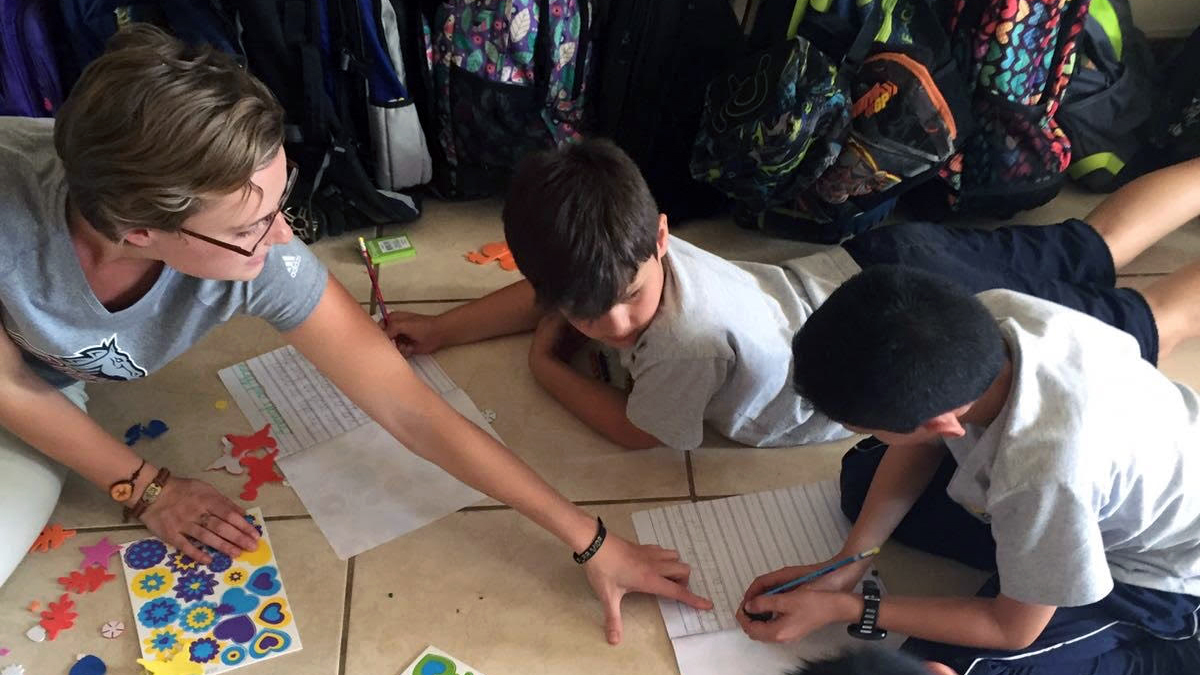Tuesday, Apr 18, 2017
Amanda Kleinman lived with a host family for 8 days
by Amanda Kleinman
Name: Amanda Kleinman, Class of 2017
Majors: Global supply chain management and management and leadership
Study abroad program: Spanish Language in Costa Rica — spring break 2017
Costa Rica left a lasting impression on me. After studying abroad there for three months in the fall of 2016, I decided to return as part of the SPN102 spring break trip led by Dr. María Villalobos-Buehner.
The difference between the two trips was my mindset. Going into this trip I wanted to converse solely in Spanish to the best of my ability for full personal benefit no matter how many times I stumbled on vocabulary and sentence structure. The objective of studying abroad in Costa Rica for the planned eight days with a host family was to surround ourselves in the Spanish language and Costa Rican culture while taking appropriate courses to assist us in everyday conversion with our mama ticas (host moms), locals and each other.
We arrived in San Jose, Costa Rica, on Saturday, March 11, and were picked up by our mama ticas. Each day we were given a variety of typical Costa Rican food for breakfast and dinner, such as gallo pinto, plátanos maduros, patacones, mashed yucca, sopa de mariscos and freshly prepared juices.
Our first activity was a city tour through downtown San Jose and in Parque Nacional. We learned of the history behind Costa Rica’s fight for independence during the civil war, abolishment of its army in 1948, the success and controversy behind the growth of the coffee and banana industries, its four powers of government, and more!
After the tour, we ate a typical Costa Rican lunch (casado) then went shopping at an artisan market that we visited multiple times, learning to negotiate prices in Spanish with around 50 vendors who sold handcrafted items along with touristy memorabilia.
I absolutely loved our intensive Spanish classes with Dr. Villalobos-Buehner from 9 a.m. to noon, Monday through Wednesday. We were able to learn the language faster in this setting because we couldn’t ‘escape’ the language and there were only four students in class. The classes were very engaging, as we presented unique items found in a local food market, wrote about each day’s experiences, expectations and highlights, and had more one-on-one attention.
After classes, when we had free time, I walked to nearby parks, bakeries and stores. However, the highlight of my free time activities was visiting my host family from my last trip. It was a blast speaking only Spanish with them and showing them how much I’ve learned and grown as a person in such a short period of time.
An activity I really enjoyed was the cooking class component of the trip. I worked hands-on with a local tica, María Lena, to prepare and cook a meal of sweet mashed plantains with mozzarella cheese, refried beans, vegetables and salsa; fried yucca balls with pork, nutmeg and chopped vegetables; and prestiños, which are fried tortillas with sugarcane syrup on top.
Another highlight was traveling to a local elementary school and working with a 3rd grade English class. I had five children assigned to me that I helped in designing and writing their own storybook in English. Each student then had the opportunity to present his/her book to the entire class!
When our time in San Jose came to an end, we were given gifts to remind us of key moments. For example, I always wear the bracelet my mama tica made for me. Also, Dr. Villalobos-Buehner bought me a shirt saying “Tenga Paz,” meaning “to be chill, tranquil and have peace,” along with a really special Costa Rican cookbook that, of course, is all in Spanish! I also bought myself a hammock from the artisan market to remind me of “hanging” in Costa Rica and bargaining with the vendor.
The remaining days of our trip Thursday through Saturday we spent in Tamarindo, Guanacaste, in the northern part of Costa Rica by the beach. Friday morning we went on a mangrove boat tour and learned about this ecosystem’s purpose for preventing soil erosion, having an environment where there’s a mixture of both fresh and salt water for specific organisms to thrive in, and being the home for howler monkeys, iguanas, crocodiles and many species of birds.
We spent the remainder of our afternoon on the beach drinking from coconuts “pipas” and eating empanadas. Saturday morning, I went surfing on the beach. That day, we returned to our hotel in San Jose eating new foods such as seafood soup, ceviche (raw fish), and tres leches for dessert.

